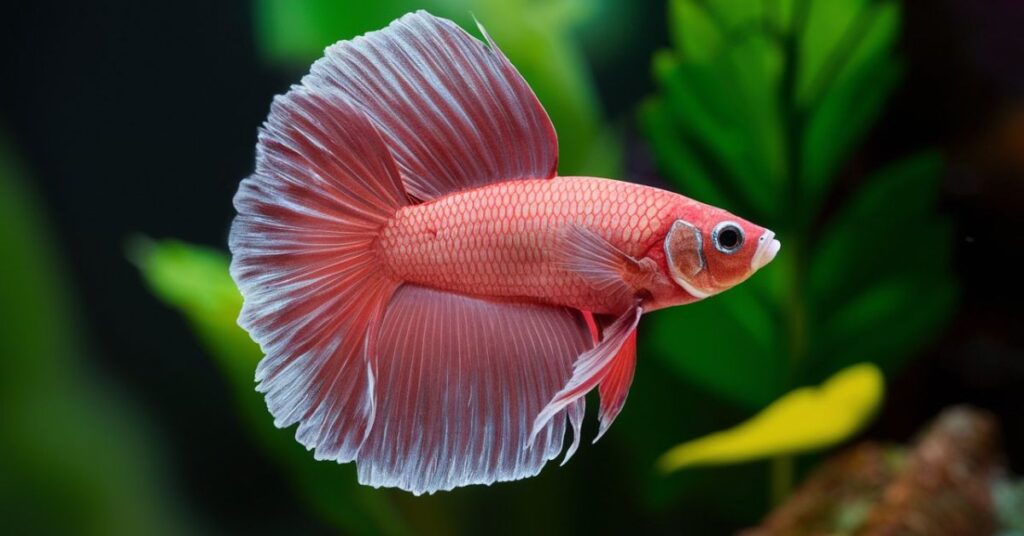Bettas, with their brilliant colors and elegant flowing fins, are among the most popular freshwater fish kept as pets. However, these beautiful creatures have very specific needs when it comes to their home aquarium. Setting up an ideal betta fish tank environment is crucial for keeping them healthy, vibrant, and showing off those stunning fins to the fullest.
In this ultimate guide, you’ll learn everything you need to know about creating the perfect betta aquarium setup. We’ll cover tank sizes, heating and filtration, live plants, decorations, tankmates, and much more. By the end, you’ll have all the knowledge to confidently prepare a spectacular home for your betta that mimics their natural habitat. Let’s dive in!
Understanding Your Betta’s Tank Needs
In the wild, bettas are found in the rice paddies, canals, and floodplains of Thailand, Cambodia, and other parts of Southeast Asia. Their native waters are shallow, stagnant, and exceptionally warm.
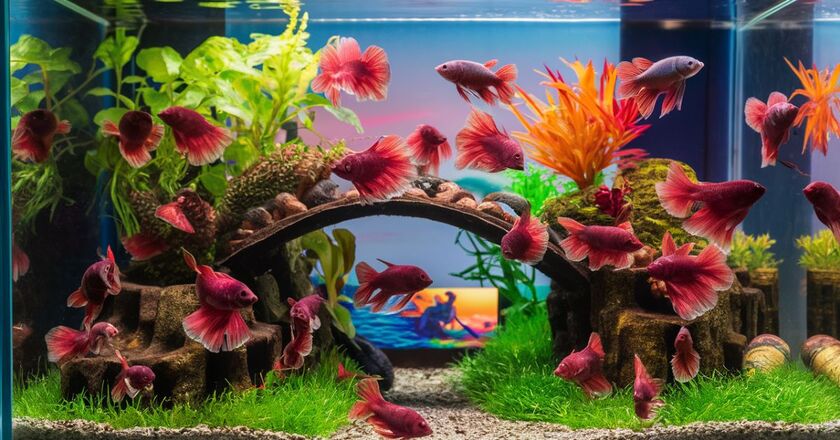
To thrive in captivity, bettas require an aquarium environment that replicates these conditions as closely as possible. At an absolute minimum, your betta will need:
- A tank of at least 2.5 gallons, but preferably 5+ gallons
- A filtered and cycled aquarium with established nitrogen cycle
- A reliable heating system to maintain tropical temps between 78-82°F
- Dim lighting conditions with a day/night cycle
- Live plants, caves, and hiding spots for enrichment
While you can find some tiny 1-quart “betta bowls” marketed for these fish, these miniature containers simply do not provide enough space or filtration for bettas to thrive long-term. A proper aquarium setup is well worth the investment for these smart, active fish.
The Right Betta Tank and Accessories
When selecting your betta’s forever home aquarium, opt for a rectangular glass tank in either a 2.5 gallon or 5+ gallon size. Rectangular shapes allow you to have a larger surface area compared to taller, column tanks which bettas tend to prefer.
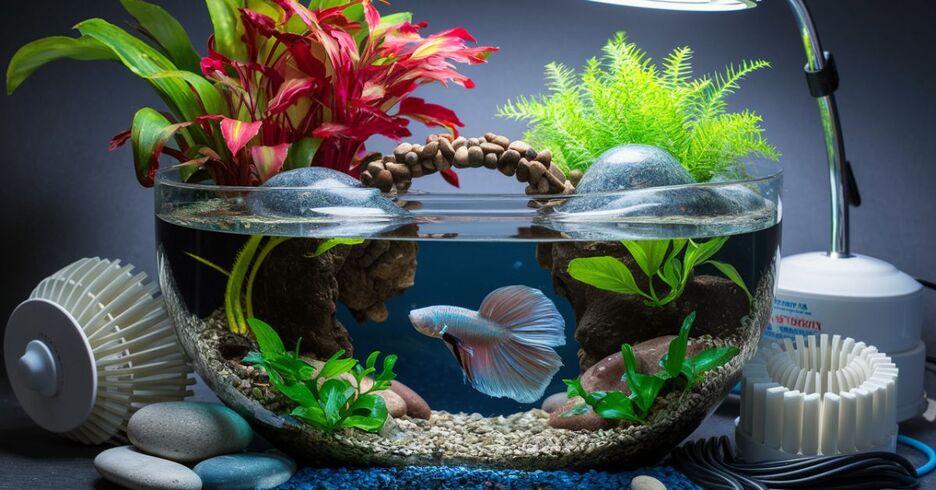
Some aquarium kits made specifically for bettas can work well and include all the essential accessories. However, be wary of kits marketed as appropriate for tiny, unfiltered, unheated bowls or vases. Those are never adequate setups for a betta.
In addition to the tank itself, you’ll need these accessories:
Tank Heater: An adjustable or pre-set heater rated for your tank size to maintain those essential toasty tropical temps.
Filter: A hang-on-back or sponge filter provides aeration, water circulation, and the establishment of the nitrogen cycle. Look for adjustable flow rates.
Tank Lid: Bettas are skilled jumpers, so a lid or hood is a must to prevent escapes and evaporation.
Live Plants : Live plants boost habitat enrichment and help water quality, though silk plants work too if keeping live ones is too difficult.
Tank Decorations: Driftwood, smooth rocks, caves, betta logs, and other hidey holes allow your betta to mimic its natural behaviors.
Water Testing Kit: Liquid test kits for pH, ammonia, nitrites, and nitrates are crucial for monitoring water quality.
Let’s take a closer look at two of the most critical tank accessory choices – filters and heaters.
Choosing the Best Filter
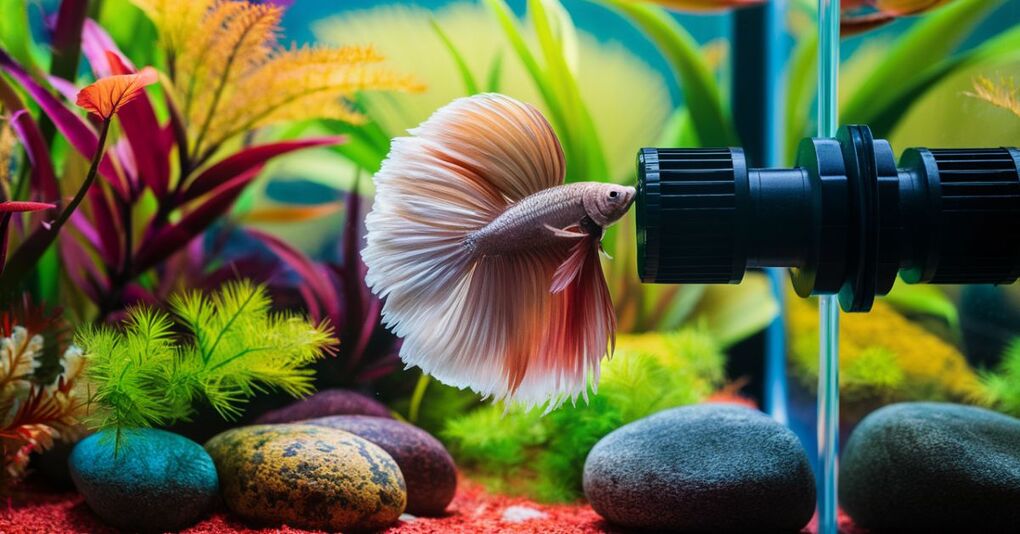
When it comes to filters, hang-on-back power filters and sponge filters tend to work best for betta tanks. Avoid ultra-powerful canister filters which can create too much disruptive flow.
Whatever filter type you choose, you’ll want one rated for twice the actual tank volume to ensure adequate filtration. Then use a filter bafflor or aquarium sponge at the outflow to diffuse the water flow if it seems too strong.
Bettas have delicate fins that can be damaged by high flow rates, so they need plenty of low-flow zones and resting areas near the tank bottom and декор. Just be sure to leave enough surface movement to maintain oxygen exchange.
Picking the Right Heater
Bettas are tropical fish that require consistently warm water in the 78-82°F range to stay healthy. Fluctuating temperatures or waters that drift below 75°F put them at high risk of becoming lethargic, losing their appetites, and developing diseases.
For most betta aquariums under 10 gallons, you’ll want an adjustable 25-50 watt heater. Adjustable models are great for dialing in your betta’s preferred temperature range. Smaller pre-set heaters can work as well, just be sure to get one rated for your exact tank size.
Whichever style you opt for, look for these heater features:
- Shatterproof and fully submersible
- Auto shut-off if temps get too high or heater runs dry
- Accurate thermostat within +/- 1°F
- Good reviews for heating consistency
Always follow manufacturer directions and position heaters horizontally near the filter outflow for optimum heat dispersion through your tank’s waters.
Related Post: What Do Betta Fish Like In Their Tank
Ideal Water Conditions for Bettas
Just like with temperature, bettas also have some precise needs when it comes to their tank’s overall water parameters. In general, you’ll want to maintain:
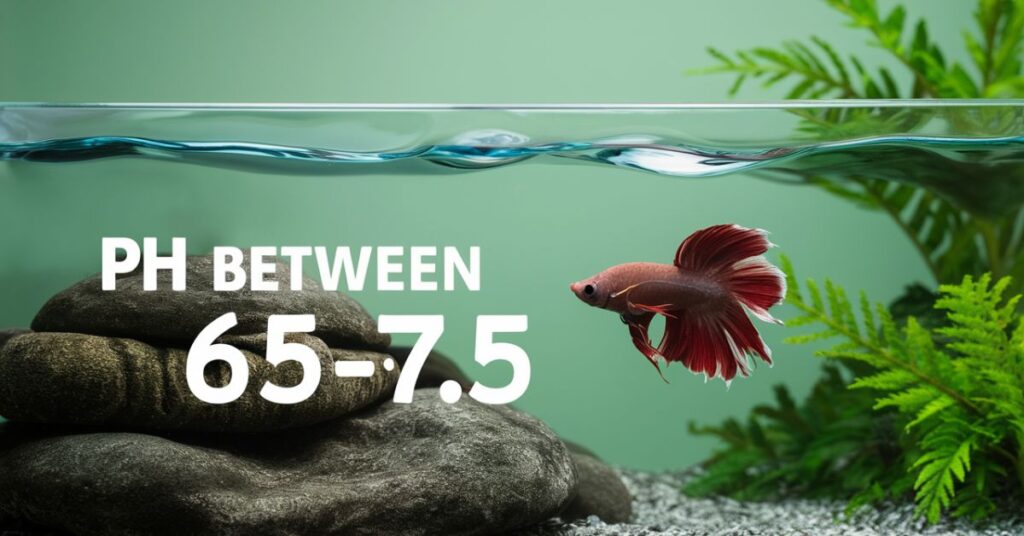
- pH between 6.5-7.5
- Ammonia and nitrites at 0 ppm
- Nitrates below 20 ppm
These conditions mimic the soft, acidic waters of their native environments. Bottled water or dechlorinated tap water works well for betta tanks, depending on your local water chemistry.
Invest in a freshwater master test kit so you can regularly monitor ammonia, nitrites, nitrates, and pH. This allows you to catch any unsafe swings before your betta gets sick.
You’ll also need to perform partial water changes of around 25% weekly, or anytime compounds like ammonia or nitrates start creeping upwards. Consistent, small water changes are key for maintaining stable conditions.
Setting Up the Nitrogen Cycle
One aspect beginner fishkeepers often overlook is establishing the nitrogen cycle in their betta tanks. This cycle is an essential biological process where beneficial bacteria convert toxic ammonia into relatively harmless nitrates.
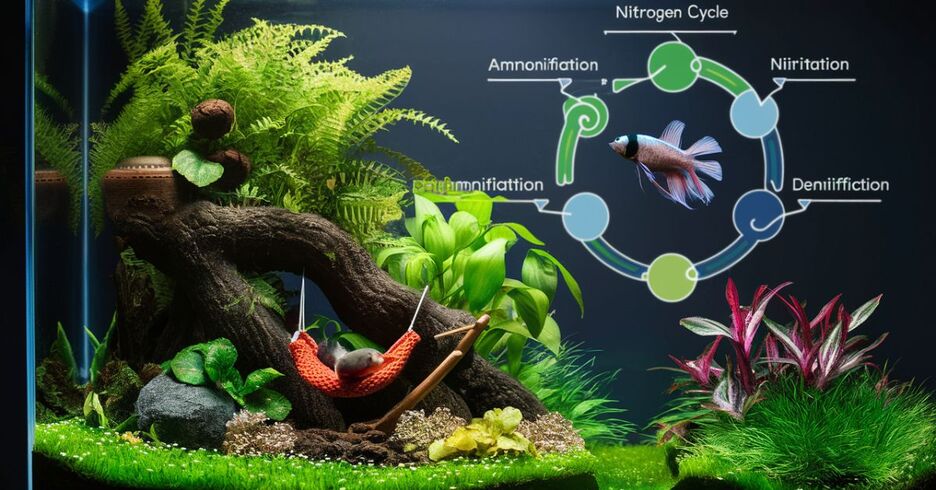
Without a cycled tank, ammonia and nitrite levels can spike rapidly, poisoning your fish. There are a few routes for getting the cycle going:
Fishless cycling: Before adding your betta, you can run an “uncycled” aquarium and gradually feed the tank with ammonia until bacteria colonies form to process it into nitrates. This takes 4-8 weeks.
Seeding with media: Adding some filter media or gravel from an already established tank can quickly jumpstart the nitrogen cycle in yours by introducing existing bacteria colonies.
Bottled bacteria: You can purchase ammonia-processing bacteria blends to instantly add to your new aquarium and expedite the cycling process.
Be patient, test water regularly, and ensure your tank is fully cycled before actually housing your betta. This stable, seasoned ecosystem is crucial for their long-term health and vibrancy.
Decorating a Stunning Betta Tank
Once you have all the core tank equipment like the filter and heater installed, it’s time to get creative with decorating your beautifully themed betta underwater oasis! There are three main elements to consider:
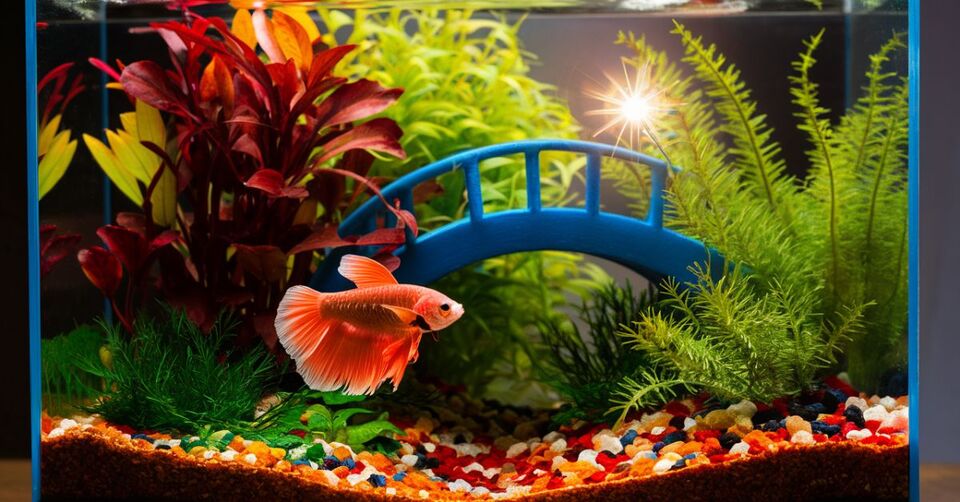
1) Live Plants 2) Driftwood and Rocks 3) Hides and Caves
Live plants are highly recommended, as bettas love resting and swimming among the leaves and benefitting from the improved water quality. Just be sure any plants you add are rated as “low-light” since bright lighting can stress these fish out.
Some great options for easy low-maintenance live plants that bettas adore include:
- Java Fern and Anubias: Simply tie or weigh these down to objects and they’ll thrive by absorbing nutrients directly from the water column.
- Moss Balls and Java Moss: Attach these mosses to driftwood or let them freely carpet areas. They provide great sheltered spaces and microhabitats.
- Amazon Sword Plants: With their large leaves and hardy root systems, Amazon swords add lovely height and shade areas for your betta.
If keeping live plants sounds too difficult, high-quality silk and plastic plants designed for aquariums can make a lush, naturalistic tank as well.
Driftwood pieces and smooth, river rocks further enhance the feeling of a natural betta environment. Just be sure to either cure the driftwood first or get it specifically for aquariums to avoid tannin leeching.
Betta Tank Mates: Yes or No?
When it comes to housing other fish, shrimp, or inverts with your betta, the general advice is: it’s usually best to keep the betta as the sole resident of the tank.
Bettas are highly territorial fish that see any other species swimming freely in their space as a threat or potential competitor. Their iconic flaring, gill outstretching, and aggressive behaviors are instinctual responses to perceived rivals.
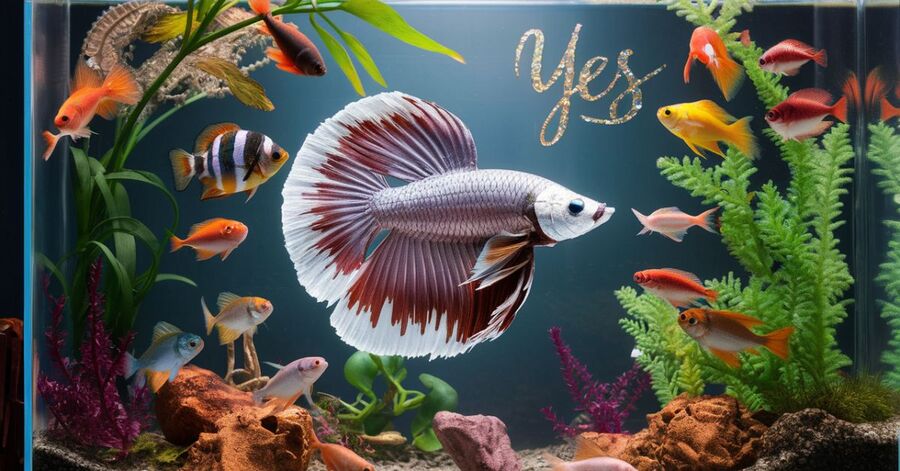
Even in tanks as small as 5 gallons, male bettas will constantly try to attack, nip fins, and stress out other tankmates. Females can be nearly as aggressive depending on individual personality.
That said, some experienced fishkeepers have had success with certain tank mates in aquariums 10 gallons or larger with lots of hiding spots and planted areas to break up line-of-sight. Some options that could potentially work include:
- Bottom-dwelling Corydoras Catfish
- Small Tetras like Neon or Ember Tetras
- Snails (Mystery Snails, Nerites, etc.)
- Shrimp like Amano, Ghost, or Cherry Shrimp
However, you’ll need to introduce any potential tankmates first before the betta, provide tons of plant cover and caves, and be prepared to remove them if prolonged aggression occurs.
Safety With Tank Mates
If you do decide to try housing your betta with other species, take these precautions:
- Get a larger aquarium (10+ gallons)
- Overplant the tank with live plants
- Provide multiple hiding areas and line-of-sight breaks
- Introduce all other fish before the betta
- Do not add any tankmates to an existing betta territory
- Feed the betta well before adding new fish
- Remove any tankmates if persistent bullying happens
Closely watch for any signs of fin nipping, prolonged flaring/aggression, or tankmates being constantly harassed into hiding. At the first indication of stress or fighting, you’ll need to separate that fish or shrimp into another aquarium.
Many betta enthusiasts find it easiest to simply keep their prized betta as the showpiece solo resident to avoid any potential aggression issues altogether.
Read More: What To Do If My Dog Ate Avocado? A comprehensive Guide:
Setting Up the Ideal Betta Environment
Once you have your betta’s tank fully cycled and decorated to replicate their natural habitat, it’s time to finally acclimate and introduce your prized betta fish!
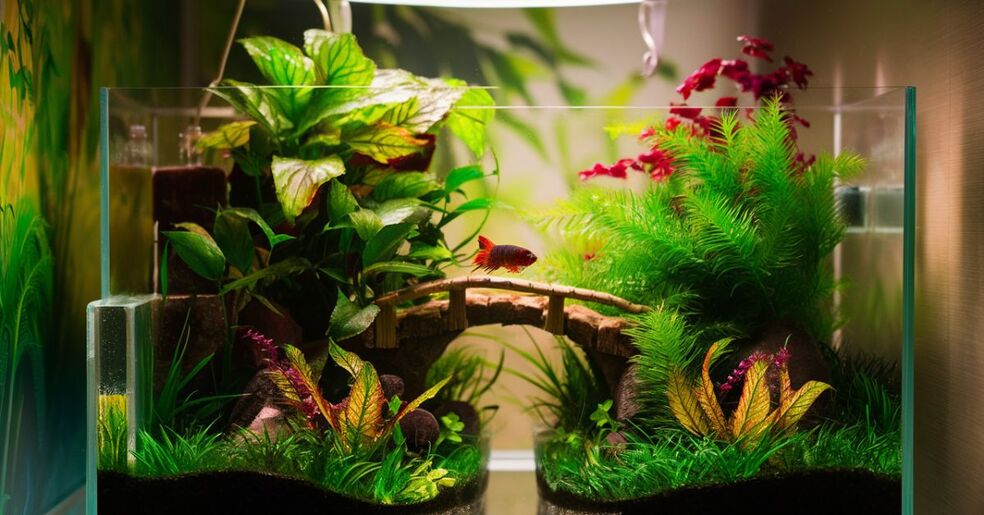
To safely transfer your betta, float the closed bag or container in the aquarium for 20-30 minutes. This allows the temperatures to equalize, reducing shock.
Then, open the bag and roll it semi-shut, allowing small amounts of the tank water to slowly mix and equalize chemistry over the next 30 minutes. Finally, you can safely net out your betta and release it into its new home!
It’s always wise to closely observe your new betta over the first 24-48 hours, as sometimes shipping stress can weaken their immune system. Feed sparingly at first and be ready to treat with antibiotics or antifungals if any signs of disease arise.
To create the ideal thriving betta environment moving forward:
- Maintain a consistent 12-14 hour daily light cycle to simulate day/night
- Feed a high-quality pellet or flake food 2-3 small portions per day
- Fast your betta 1 day per week to prevent obesity
- Do 25% water changes weekly to replenish minerals
- Siphon detritus and vacuum the gravel during water changes
By providing the right tank parameters, activity levels, feeding schedule, and overall husbandry, you’ll have your magnificent betta showing off its full splendor in no time!
If you notice any signs of disease like lethargy, closed fins, or abnormal swimming, consider setting up a quarantine tank to treat your betta before reintroducing it to the main display tank.
Frequently Asked Questions
What to put in a fish tank for betta?
For a proper betta fish tank setup, you’ll need a heated and filtered aquarium of at least 2.5 gallons, live or silk plants, caves/hides, smooth decorations like driftwood and rocks, a quality test kit, and a tight-fitting lid.
What do betta fish enjoy in their tank?
Bettas enjoy having plenty of live plants, driftwood, rocks, caves and hiding spots that mimic their natural habitat. They also appreciate gentle filtration, warm temperatures around 78-82°F, and a day/night lighting cycle.
Do betta fish need anything in their tank?
Yes, bettas absolutely need certain elements in their tank setup to thrive. At minimum, they require a heated, filtered tank of 2.5+ gallons, plants or decorations that provide hiding spots, and a secure lid to prevent jumping out.
What not to put in a betta tank?
Avoid adding any sharp decorations, objects with potentially toxic paint/metals, or anything that creates excessive water flow that can damage a betta’s delicate fins. Also steer clear of aggressive tank mates like other male bettas.
Can betta fish live without air pump?
While not strictly required, having an air pump or filter that moves the surface and introduces oxygen exchange is highly recommended for betta tanks. Betta can survive in lower oxygen water, but it impairs their health long-term.
Do betta fish need plants?
Live plants are not an absolute necessity for bettas, but they are strongly recommended. Plants help oxygenate the water, remove nitrates, provide shade, and give them areas to rest near the surface.
Do betta fish need sunlight?
No, bettas do not require direct sunlight and actually prefer dim lighting conditions that mimic their shaded natural habitats. Too much bright, direct sunlight can overheat their tank and cause stress.
How to increase oxygen in betta tank?
Increase surface agitation through gentle filtration, an air stone, or even just pouring water into the tank during water changes. Adding live plants and doing frequent partial water changes also helps boost oxygen levels.
Do bettas need bubbles?
No, bettas do not necessarily need an air stone or bubbles in their tank. However, the gentle surface movement created by a sponge filter or air stone does help oxygenate the water which is beneficial for them.
Conclusion
Whether your new scaly friend is a vibrant crowntail, elegant veiltail, or majestic plakat betta, setting up the ideal tank is crucial for allowing them to thrive and reach their fullest potential.
From heating and filtering to live plants and decorations, putting in the proper time, research, and care in creating your betta’s underwater ecosystem mimics their native habitats. This allows these smart, personable fish to display their full glory through flaring fins, inquisitive behaviors, and brilliant colors.
While betta fishkeeping requires hands-on maintenance like any aquarium, the rewards of observing your pet’s daily life in such a lush, naturalistic environment make it all worthwhile. Soon enough, you’ll be the proud fishkeeper of an energetic, breathtakingly healthy showpiece betta!

